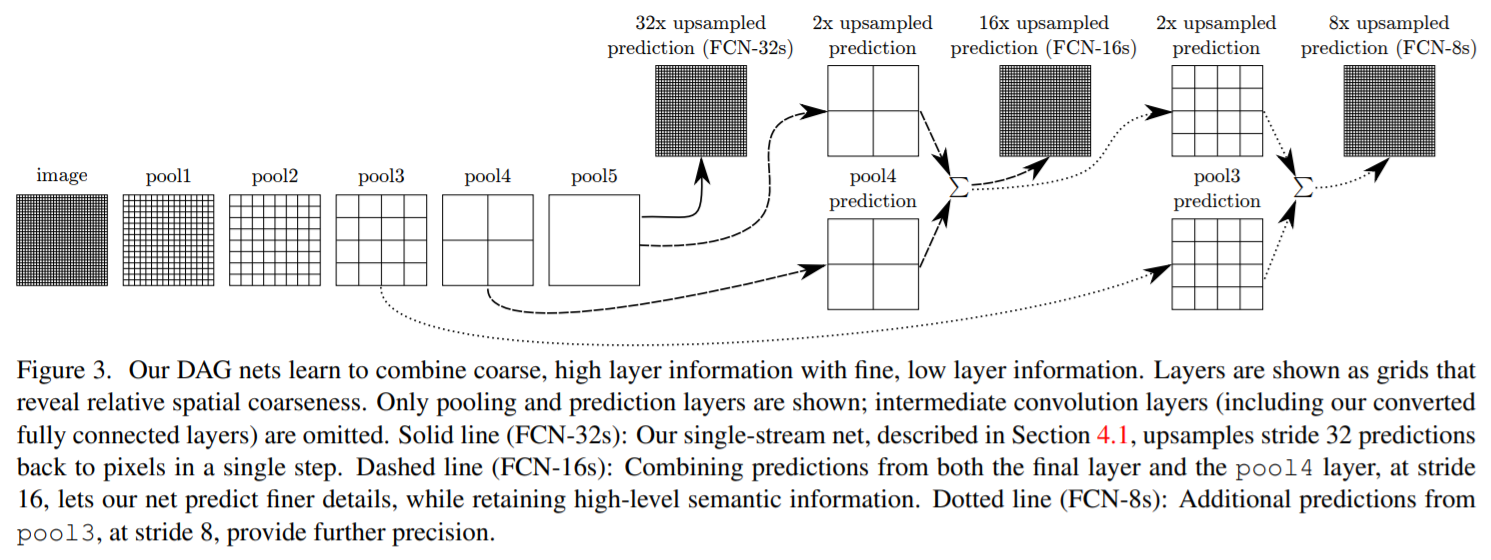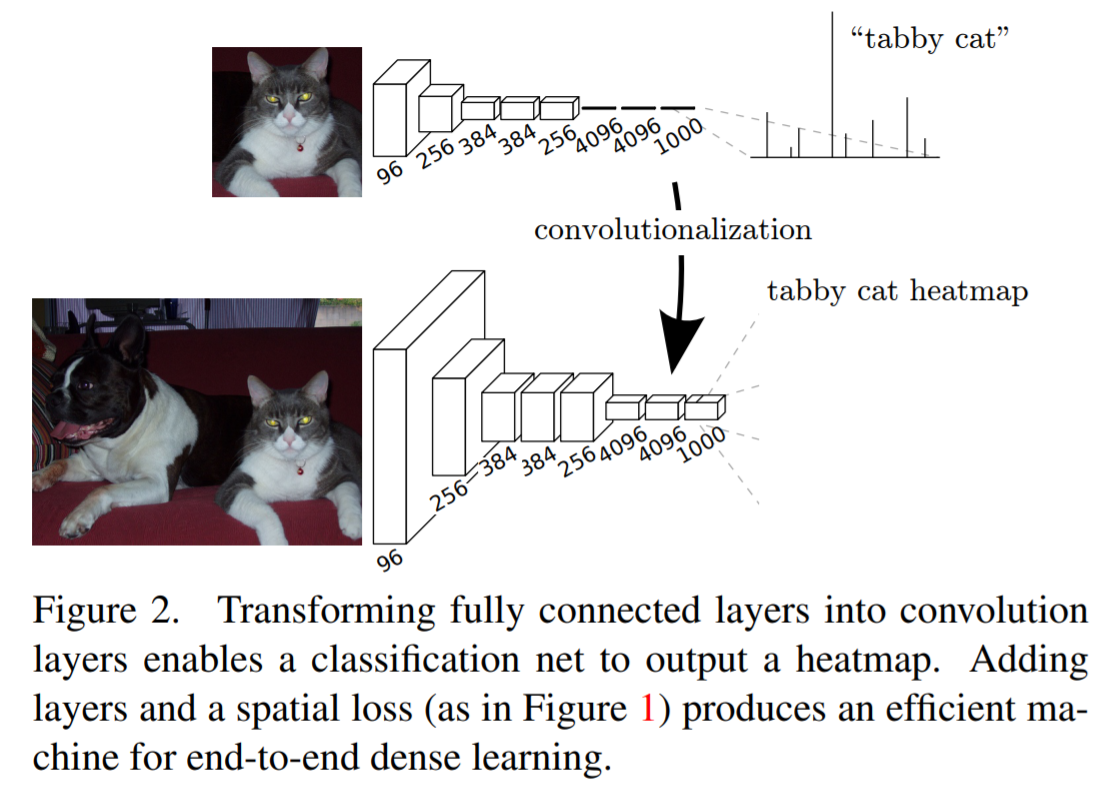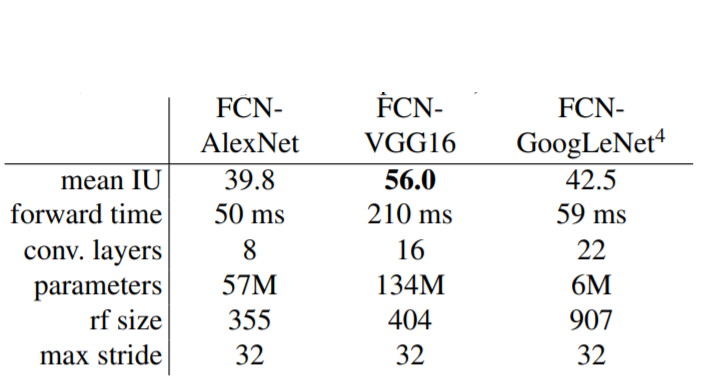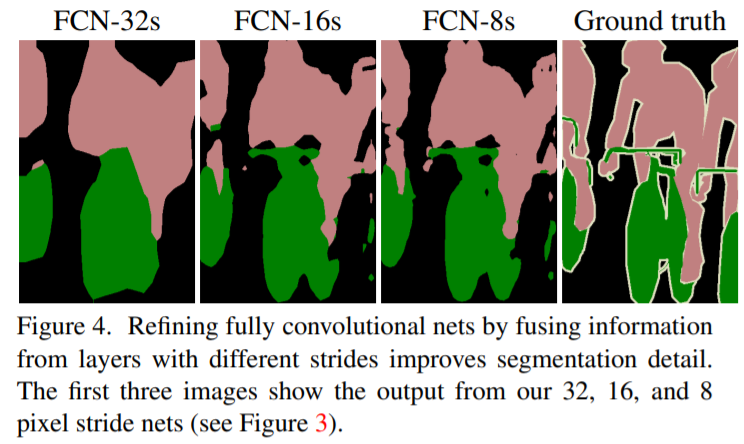[Paper Review] Fully convolutional networks for semantic segmentation
Fully convolutional networks for semantic segmentation
Long, Jonathan, Evan Shelhamer, and Trevor Darrell. “Fully convolutional networks for semantic segmentation.” Proceedings of the IEEE conference on computer vision and pattern recognition. 2015.
Abstract
-
기존의 SOTA를 뛰어넘는 end-to-end, pixels-to-pixels로 학습이 가능한 convolutional networks를 보여줌
-
Fully convolutional network로 임의의 사이즈의 input을 처리할 수 있고, 효율적인 inference와 학습을 가능하게 함
-
Classification networks(AlexNet,VGG,GoogleNet)을 fully convolutional networks에 적용시키고, 학습된 representations을 segmentation task에 알맞게 fine-tuning 함
-
정확하고 상세한 segmentations 결과를 생성하기 위해, 깊은 layers에서의 semantic 정보(coarse layer)와 얕은 layers에서의 appearance 정보(fine layer)를 결합
-
fully convolutional network는 PASCAL VOC, NYUDv2, SIFT Flow에서 SOTA 성능을 달성했고, inference 속도도 빠름
Introduction
- CNN을 통해 많은 recognition tasks에 발전이 있었음
bounding box object detection, part and key point prediction, local correspondence
- 기존의 semantic segmentation 방식들은 convnets을 사용하였으나, 이는 단점이 존재함
FCN : fully convolutional network
-
기존의 SOTA 성능을 뛰어넘고, end-to-end, pixels-to-pixels로 학습이 가능
-
최초로 FCN을 end-to-end로 pixel 단위 예측에 적용하고, supervised pre-training을 사용
-
임의의 사이즈를 가진 inputs으로부터 dense outputs을 예측
-
inference와 학습이 전체 이미지에 대하여 한번 수행 (dense feedforward computation and backpropagation)
-
network 내부 upsampling layers는 subsampling pooling으로 pixel 단위 예측과 학습을 가능하게 함
기존 방식들 vs FCN
- FCNs은 기존의 patchwise training과 다르게, 복잡한 선,후처리가 필요하지 않음
기존 방식은 효율적이지 못함
- 제안한 방식은 기존의 classification networks를 fully convolutional network로 수정하고, fine-tuning하여 사용
기존의 방식들은 pre-training 없이 작은 convnets을 적용함
- global information은 의미정보를 담고 있고, local information은 위치정보를 담고 있음
deep feature의 계층들에는 위치정보와 의미정보가 공동으로 encoding
- skip 구조를 통해 deep features와 shallow features를 결합시킴
deep,coarse,semantics / shallow,fine,appearance
Fully convolutional networks
3.1 Adapting classifiers for dense prediction
- 기존의 일반적인 recognition networks(LeNet, AlexNet)는 input size가 고정되어 있고, 공간정보가 없는 outputs 생성
fully connected layers에 의해 dimension이 고정되고, 공간 좌표를 버림
- 위와 같은 문제점을 해결하기 위해, fully connected layers를 전체 input regions을 커버하는 kernels을 갖는 convolutions으로 간주하고 대체함
임의의 사이즈를 갖는 input을 다룰 수 있고, classification maps을 생성함
- FCN은 높은 계산 효율성을 가짐
3.2 Shift-and-stitch is filter rarefaction
-
OverFeat에서 소개된 Shift-and-stitch trick은 보간법 없이 coarse outputs에서 dense predictions을 생성하는 방법
-
Convnet의 layers나 filters의 stride를 변경하는 것만으로 shift-and-stitch trick과 동일한 output을 생성할 수 있음
trick을 사용하는 것보다 효과적임
3.3 Upsampling is backwards strided convolution
-
coarse outputs을 dense pixels로 연결시키는 또 다른 방법은 보간법 (ex, bilinear interpolation)
-
factor f로 upsampling을 하는 것은 convolution을 1/f stride로 수행하는 것과 동일함
또는 stride가 f인 convolution을 반대로 수행하는 것 (deconvolution)
- 보간법을 이용하지 않고 deconvolution layer를 이용하여 upsampling을 수행하면 end-to-end로 학습이 가능함
bilinear interpolation은 학습되지 않고 고정된 연산을 수행함
3.4 Patchwise training is loss sampling
-
patchwise training에 대한 실험을 진행하였으나, 이는 전체 이미지에 대하여 학습을 진행하는 것보다 계산 효율성이 좋지 못함
-
전체 이미지 학습이 효과적이고 효율적임
Segmentation Architecture
4.1 From classifier to dense FCN
-
총 3개의 classification networks를 사용 : AlexNet, VGG, GoogleNet
-
classifier -> FCN
최종 classifier layer를 제거하고 모든 fully connected layers를 convolutions으로 변경
PASCAL VOC classes를 예측하기 위해 channel dimension을 21로 변경시키는 1x1 convolution 추가
이후에 deconvolution layer를 통해 pixel-dense outputs 생성
- 실험 결과
GoogleNet이 좋지 않은 성능을 보임
4.2 Combining what and where
- 최종 prediction layer에서 32 pixel stride는 너무 coarse한 결과가 나옴
이를 해결하기 위해, lower layers와 final prediction layer를 결합시켜 최종 prediction을 냄
-
FCN-32s : single-stream net으로 stride 32 predictions을 초기 사이즈로 upsampling
-
FCN-16s : final layer와 pool4 layer의 prediction을 결합하여 초기 사이즈로 upsampling
-
FCN-8s : FCN-16s에 추가적으로 pool3의 prediction 값을 결합하여 초기 사이즈로 upsampling
layer를 많이 결합할수록 더 디테일한 결과가 나옴





Leave a comment